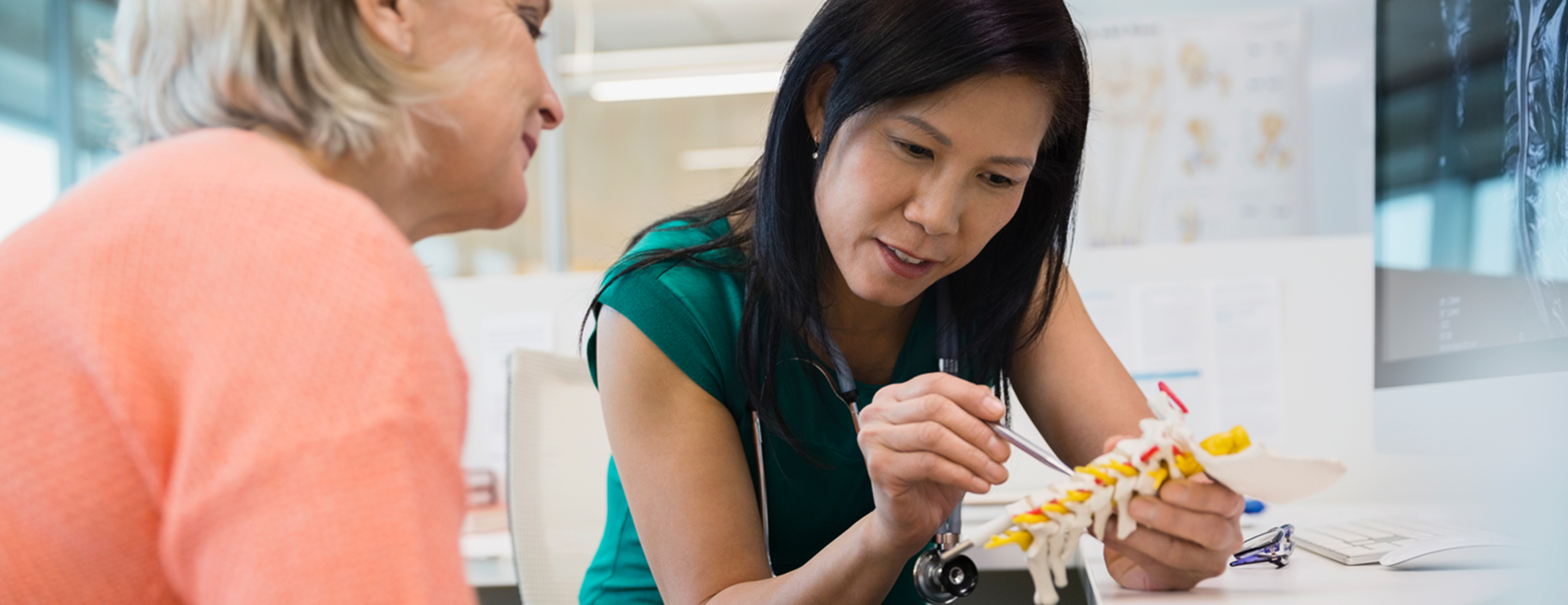
Lumbosacral spine CT
Definition
A lumbosacral spine CT is a
Alternative Names
Spinal CT; CT - lumbosacral spine; Low back pain - CT; LBP - CT
How the Test is Performed
You will be asked to lie on a narrow table that slides into the center of the CT scanner. You will need to lie on your back for this test.
Once inside the scanner, the machine's x-ray beam rotates around you.
Small detectors inside the scanner measure the amount of x-rays that make it through the part of the body being studied. A computer takes this information and uses it to create a number of images, called slices. These images can be stored, viewed on a monitor, or printed on film. Three-dimensional models of organs can be created by stacking the individual slices together.
You must be still during the exam, because movement causes blurred images. You may be told to hold your breath for short periods.
In some cases, an iodine-based dye, called contrast, may be injected into your vein before images are taken. Contrast can highlight specific areas inside the body, which creates a clearer image.
In other cases, a CT of the lumbosacral spine is done after injecting contrast dye into the spinal canal during a
The scan usually lasts a few minutes.
How to Prepare for the Test
You should remove all jewelry or other metal objects before the test. This is because they may cause inaccurate and blurry images.
If you do need a lumbar puncture, you may be asked to stop your blood thinners or anti-inflammatory medicines (NSAIDs) several days before the procedure. Check with your doctor ahead of time.
How the Test will Feel
The x-rays are painless. Some people may have discomfort from lying on the hard table.
Contrast may cause a slight burning sensation, a metallic taste in the mouth, and a warm flushing of the body. These sensations are normal and usually go away within a few seconds.
Why the Test is Performed
CT rapidly creates detailed pictures of the body. A CT of the lumbosacral spine can evaluate fractures and changes of the spine, such as those due to arthritis or deformities.
What Abnormal Results Mean
CT of the lumbosacral spine may reveal the following conditions or diseases:
Cyst Herniated disk - Infection
- Cancer that has spread to the spine
Osteoarthritis Osteomalacia (softening of the bones)- Pinched nerve
Tumor - Vertebral
fracture (broken spine bone)
Risks
The most common type of contrast given into a vein contains iodine. If a person with an iodine allergy is given this type of contrast,
If you have kidney problems, diabetes or are on kidney dialysis, talk to your health care provider before the test about your risks.
CT scans and other x-rays are strictly monitored and controlled to make sure they use the least amount of radiation. The risk associated with any individual scan is small. The risk increases when many more scans are performed.
In some cases, a CT scan may still be done if the benefits greatly outweigh the risks. For example, it can be more risky not to have the exam if your provider thinks you might have cancer.
Pregnant or breastfeeding women should consult their provider about the risk of CT scans to the baby. Radiation during pregnancy can affect the baby, and the dye used with CT scans can enter breast milk.
References
Shaw AS, Prokop M. Computed tomography. In: Adam A, Dixon AK, Gillard JH, Schaefer-Prokop CM, eds. Grainger & Allison's Diagnostic Radiology. 6th ed. Philadelphia, PA: Elsevier Churchill Livingstone; 2015:chap 4.
Thomsen HS, Reimer P. Intravascular contrast media for radiography, CT, MRI, and ultrasound. In: Adam A, Dixon AK, Gillard JH, Schaefer-Prokop CM, eds. Grainger & Allison's Diagnostic Radiology. 6th ed. Philadelphia, PA: Elsevier Churchill Livingstone; 2015:chap 2.
Review Date: 08/15/2018
The information provided herein should not be used during any medical emergency or for the diagnosis or treatment of any medical condition. A licensed physician should be consulted for diagnosis and treatment of any and all medical conditions. Call 911 for all medical emergencies. Links to other sites are provided for information only -- they do not constitute endorsements of those other sites. Copyright ©2019 A.D.A.M., Inc., as modified by University of California San Francisco. Any duplication or distribution of the information contained herein is strictly prohibited.
Information developed by A.D.A.M., Inc. regarding tests and test results may not directly correspond with information provided by UCSF Health. Please discuss with your doctor any questions or concerns you may have.





